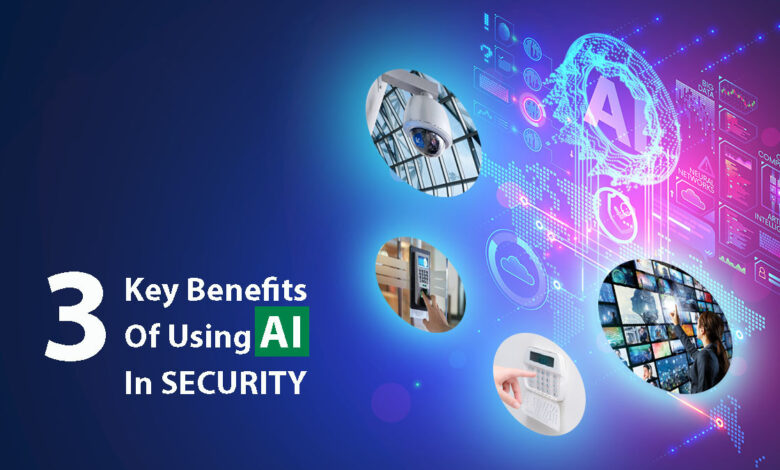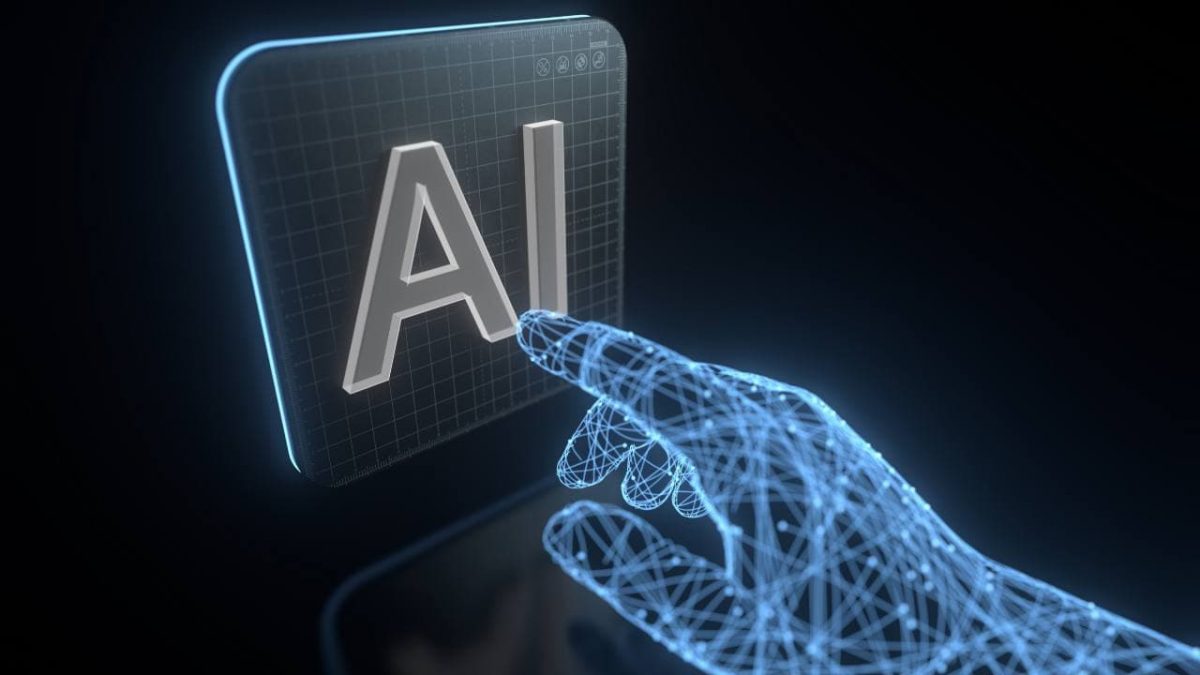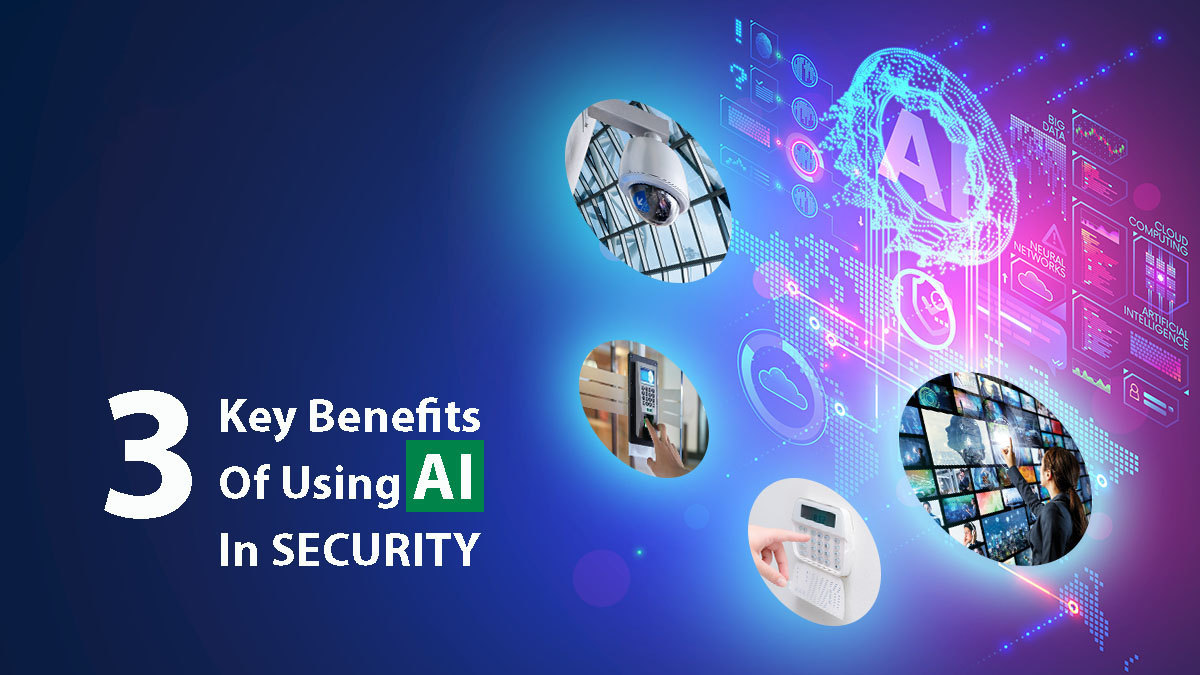
AI in Application Security Powerful Tool or Potential Risk?
Ai in application security powerful tool or potential risk – AI in application security: powerful tool or potential risk? It’s a question that keeps cybersecurity professionals up at night. On one hand, AI offers incredible potential for automating vulnerability detection, threat modeling, and incident response, promising a more secure digital landscape. But on the other, the same powerful technology could be weaponized by attackers, leading to more sophisticated and evasive threats.
This post dives into the double-edged sword of AI in application security, exploring its benefits, limitations, and ethical considerations.
We’ll examine how AI is transforming vulnerability scanning, making it faster and more accurate than traditional methods. We’ll also discuss the role of AI in threat modeling and risk assessment, highlighting both its strengths and its potential biases. Finally, we’ll address the crucial ethical implications, including the potential for AI to exacerbate existing inequalities and the need for transparency and accountability in its development and deployment.
AI’s Role in Vulnerability Detection
AI is rapidly transforming application security, offering powerful new tools for identifying and mitigating vulnerabilities. Its ability to analyze vast amounts of data and identify patterns invisible to human analysts makes it a game-changer in the fight against cyber threats. While concerns about AI’s potential misuse exist, its positive impact on vulnerability detection is undeniable.
AI Identifying a Zero-Day Vulnerability: A Hypothetical Scenario
Imagine a sophisticated e-commerce platform, “ShopSecure,” employing AI-powered security monitoring. The AI analyzes network traffic, application logs, and user interactions in real-time. It detects an unusual spike in requests targeting a specific endpoint responsible for processing credit card payments. Further analysis reveals a previously unknown sequence of characters within the requests – a potential exploit. The AI correlates this sequence with known attack patterns in its vast database, identifying it as a zero-day vulnerability that bypasses existing security measures.
This anomaly, undetected by traditional signature-based systems, triggers an immediate alert, allowing ShopSecure’s security team to patch the vulnerability before it can be exploited. The AI also automatically generates a detailed report, including the nature of the vulnerability, the affected code segment, and suggested remediation steps.
Advantages of AI-Powered Vulnerability Scanners over Traditional Methods
AI-powered vulnerability scanners offer several key advantages over traditional methods. Traditional scanners often rely on signature-based detection, meaning they only identify vulnerabilities for which they have pre-defined signatures. This leaves them vulnerable to zero-day exploits and novel attack techniques. AI, however, can learn from vast datasets of known vulnerabilities and identify patterns indicative of vulnerabilities even without pre-defined signatures.
This significantly improves detection rates for unknown and evolving threats. Additionally, AI can automate many aspects of the vulnerability scanning process, reducing the time and resources required for security assessments. It can also prioritize vulnerabilities based on their severity and potential impact, allowing security teams to focus on the most critical threats.
Comparison of Static and Dynamic AI-Based Vulnerability Analysis
Static analysis examines the application’s source code without actually running it, while dynamic analysis examines the application’s behavior during runtime. Both methods benefit from AI integration. Static AI-based analysis can identify vulnerabilities early in the development lifecycle, reducing the cost and effort of remediation. However, it may miss runtime vulnerabilities that only manifest when the application is running.
Dynamic AI-based analysis excels at detecting runtime vulnerabilities and can provide more context about the vulnerability’s behavior. However, it requires running the application, which may not always be feasible or safe. The accuracy of both methods depends on the quality of the AI model and the data used to train it. Generally, a combined approach using both static and dynamic AI-based analysis provides the most comprehensive vulnerability detection.
AI Techniques Used in Vulnerability Detection
The following table compares different AI techniques used in vulnerability detection:
| Technique | Strengths | Weaknesses | Application Examples |
|---|---|---|---|
| Machine Learning | Can identify patterns in large datasets, good for classifying known vulnerabilities | Requires large labeled datasets, may struggle with novel attacks | Classifying vulnerabilities based on their severity, identifying suspicious code patterns |
| Deep Learning | Can learn complex patterns and relationships in data, good for identifying zero-day vulnerabilities | Requires significant computational resources, can be difficult to interpret results | Analyzing network traffic to detect anomalous behavior, identifying vulnerabilities in binary code |
| Natural Language Processing (NLP) | Can analyze code comments, documentation, and security advisories to identify potential vulnerabilities | Relies on the quality of textual data, may struggle with poorly documented code | Extracting vulnerability information from security advisories, identifying potential vulnerabilities in code comments |
| Reinforcement Learning | Can automate security testing processes, finding vulnerabilities more efficiently | Requires careful design and training, can be computationally expensive | Automating penetration testing, optimizing vulnerability scanning strategies |
AI in Threat Modeling and Risk Assessment
AI is rapidly transforming application security, and its impact on threat modeling and risk assessment is particularly significant. Traditional threat modeling relies heavily on human expertise and can be time-consuming, often failing to identify all potential vulnerabilities. AI offers the potential to automate and enhance this process, leading to more comprehensive and accurate risk assessments. By leveraging machine learning algorithms, AI can analyze vast amounts of data to identify patterns and predict potential attack vectors that might otherwise be missed.AI can predict potential attack vectors and their impact by analyzing various data sources, including code repositories, network traffic, vulnerability databases, and security logs.
Machine learning models can be trained to identify correlations between specific vulnerabilities, attack techniques, and their consequences. For example, an AI system could analyze historical data on successful exploits to predict the likelihood of similar attacks against a specific application. Furthermore, AI can simulate different attack scenarios and estimate the potential impact of each, providing a more nuanced understanding of the overall risk profile.
This allows security teams to prioritize mitigation efforts based on the likelihood and potential severity of each threat.
AI-Powered Threat Modeling Tools and Their Functionalities
Several AI-powered threat modeling tools are emerging in the market, each offering unique functionalities. These tools often integrate with existing security platforms and leverage various AI techniques, such as machine learning and natural language processing. For example, some tools use static code analysis to identify potential vulnerabilities and then leverage machine learning to predict the likelihood of exploitation. Others use dynamic analysis to monitor application behavior in real-time and identify suspicious activities.
A hypothetical example could be a tool that analyzes code for known vulnerabilities and then uses a Bayesian network to estimate the probability of a successful attack based on factors like the severity of the vulnerability and the attacker’s skill level. Another tool might leverage graph databases to model the application’s architecture and identify critical dependencies that could be exploited by attackers.
These tools typically provide visual representations of potential attack paths, making it easier for security teams to understand and address identified risks.
Limitations of AI in Threat Modeling
While AI offers significant advantages, it’s crucial to acknowledge its limitations. One major concern is the potential for bias in the training data. If the data used to train the AI model is not representative of the real-world threat landscape, the model may produce inaccurate predictions. For instance, a model trained primarily on data from one specific industry might not be effective in predicting threats in a different industry.
Another limitation is the “black box” nature of some AI algorithms. It can be difficult to understand how the model arrives at its predictions, making it challenging to validate its accuracy and identify potential biases. Furthermore, AI models are only as good as the data they are trained on. Incomplete or inaccurate data can lead to unreliable predictions.
Finally, sophisticated attackers can adapt their techniques to evade detection by AI systems, rendering the predictions obsolete.
Factors to Consider When Integrating AI into Threat Modeling
Before integrating AI into a threat modeling process, several crucial factors must be considered. First, it’s essential to select the right AI tools and techniques based on the specific needs and characteristics of the application being modeled. Secondly, ensure that the training data is comprehensive, accurate, and representative of the real-world threat landscape. Thirdly, it’s vital to establish a process for validating the accuracy of the AI model’s predictions and addressing any identified biases.
Fourthly, consider the integration of AI into existing security workflows and processes to ensure seamless operation. Fifthly, plan for ongoing maintenance and updates of the AI model to account for evolving threats and vulnerabilities. Finally, ensure that sufficient expertise is available to manage and interpret the AI model’s output. Failing to address these factors could lead to inaccurate risk assessments and ineffective security measures.
AI-Driven Security Automation and Response
AI is rapidly transforming application security, and nowhere is this more evident than in the realm of automation and response. The sheer volume of security events, vulnerabilities, and potential threats facing organizations today makes manual intervention impractical. AI offers a powerful solution by automating many crucial security tasks, leading to faster response times, reduced human error, and improved overall security posture.
This automation extends from proactive threat hunting to reactive incident response.AI significantly enhances security operations by automating previously manual processes. This automation frees up human security analysts to focus on more complex tasks requiring critical thinking and strategic decision-making, while AI handles the repetitive, time-consuming aspects of security management. The potential for improved efficiency and reduced human error is substantial, particularly in areas like vulnerability patching and incident response where fatigue and oversight can have significant consequences.
AI’s Role in Automating Incident Response
AI can dramatically accelerate incident response by automating several key stages. This begins with threat detection, where AI algorithms can analyze massive datasets from various sources (logs, network traffic, security tools) to identify anomalies and potential threats far faster than human analysts. Once a threat is identified, AI can automatically initiate containment procedures, such as isolating infected systems or blocking malicious traffic.
Further, AI assists in root cause analysis, identifying the source and extent of the breach, and finally, it can automate the remediation process, applying patches and restoring systems to a secure state. The speed and efficiency provided by AI drastically reduces the impact of security incidents. For example, imagine a Distributed Denial of Service (DDoS) attack. AI could automatically detect the surge in traffic, identify the source, and implement mitigation strategies, such as traffic filtering or load balancing, in a matter of seconds, minimizing downtime and damage.
Reducing Human Error through AI Automation
Human error is a significant factor in many security breaches. Fatigue, distraction, and a lack of experience can lead to mistakes in configuration management, vulnerability patching, or incident response. AI can significantly mitigate these risks. By automating repetitive tasks and providing consistent, accurate analysis, AI reduces the potential for human error. For example, AI-powered vulnerability scanners can consistently identify and prioritize vulnerabilities, ensuring that critical patches are applied promptly and accurately.
Similarly, AI can automate the process of user access management, reducing the risk of misconfigurations that could lead to unauthorized access. This consistent, error-free performance is a major advantage of AI-driven security automation.
Challenges in Implementing AI-Driven Security Automation
Despite its considerable advantages, implementing AI-driven security automation faces several challenges. Integration complexities are significant, as AI systems need to seamlessly integrate with existing security tools and infrastructure. This requires careful planning and often involves significant customization and configuration. Moreover, there’s a considerable skills gap. Organizations need security professionals with expertise in AI, machine learning, and data science to develop, deploy, and maintain AI-driven security systems.
Finding and retaining such talent can be difficult and expensive. Finally, the cost of implementing and maintaining AI systems can be substantial, requiring a significant upfront investment in software, hardware, and training.
Flowchart of AI-Driven Automated Incident Response
The following describes a flowchart illustrating the process of AI-driven automated incident response:
1. Threat Detection
AI algorithms analyze security data (logs, network traffic, etc.) for anomalies indicative of a security incident.
2. Alert Generation
Upon detection of a threat, the AI system generates an alert, providing details about the nature and severity of the incident.
3. Incident Containment
The AI system automatically initiates containment procedures, such as isolating infected systems or blocking malicious traffic.
4. Root Cause Analysis
AI analyzes the incident data to identify the root cause of the breach and its extent.
5. Remediation
The AI system automatically applies patches, restores systems, and implements other necessary remediation measures.
6. Post-Incident Review
The AI system generates a report summarizing the incident, its impact, and the actions taken. This report aids in improving future incident response strategies. Human analysts review the report to identify any areas for improvement in the AI’s response or the overall security posture.
Ethical and Societal Implications of AI in Application Security
The integration of artificial intelligence into application security offers unprecedented opportunities, but it also raises significant ethical and societal concerns. The power of AI to analyze vast datasets and identify vulnerabilities far surpasses human capabilities, but this power can be easily misused, leading to unforeseen consequences. Understanding these implications is crucial for responsible development and deployment of AI-powered security tools.AI’s potential to revolutionize application security is undeniable, yet its misuse poses a substantial threat.
The very capabilities that make AI effective in defense can be weaponized for offense. This necessitates a careful examination of the ethical considerations surrounding its development and use.
Potential Misuse of AI in Application Security
The sophisticated algorithms powering AI-driven security tools can be adapted to create more sophisticated and elusive attacks. For instance, AI can be used to generate highly targeted phishing emails, crafting messages that perfectly mimic the style and tone of legitimate communications, thereby increasing the success rate of social engineering attacks. Similarly, AI can be employed to automate the discovery and exploitation of zero-day vulnerabilities, accelerating the pace of attacks and making them harder to defend against.
The potential for AI-powered malware to learn and adapt, evading traditional security measures, represents a significant escalation in the threat landscape. Consider the potential for an AI system to automatically generate thousands of variations of a single exploit, making signature-based detection systems obsolete.
Transparency and Explainability in AI-Powered Security Tools
Transparency and explainability are paramount in building trust and ensuring accountability in AI-powered security tools. “Black box” AI systems, where the decision-making process is opaque, are inherently risky. If a security system flags a legitimate action as malicious, or fails to detect a genuine threat, the lack of transparency makes it difficult to understand why, hindering remediation efforts and potentially causing significant damage.
Explainable AI (XAI) aims to address this issue by providing insights into the reasoning behind AI’s decisions, allowing security professionals to validate its findings and improve its performance. Without this crucial transparency, the adoption of AI in security could be severely hampered.
Impact of AI on the Cybersecurity Workforce
The automation capabilities of AI raise concerns about potential job displacement within the cybersecurity workforce. AI can automate many repetitive tasks, such as vulnerability scanning and incident response, potentially reducing the demand for entry-level cybersecurity professionals. However, this automation also frees up human experts to focus on more complex and strategic tasks, such as threat hunting, incident investigation, and developing advanced security strategies.
The cybersecurity workforce will need to adapt and acquire new skills to work alongside AI, focusing on areas that require human judgment, creativity, and critical thinking. The integration of AI should be viewed as an opportunity for upskilling and reskilling rather than solely a threat of job displacement. For example, security analysts can leverage AI tools to accelerate their work, allowing them to focus on more complex threats and strategic security planning.
Ethical Guidelines for the Development and Deployment of AI in Application Security
The responsible development and deployment of AI in application security require a robust ethical framework. This framework should guide the creation and use of these powerful tools, mitigating potential risks and maximizing their benefits.
- Prioritize human oversight: AI systems should be designed with human oversight to ensure accountability and prevent unintended consequences.
- Promote transparency and explainability: AI models should be designed to be transparent and explainable, allowing for scrutiny and validation of their decisions.
- Ensure fairness and non-discrimination: AI systems should be designed to avoid bias and ensure fair treatment of all users.
- Protect privacy and data security: AI systems should be designed to protect user privacy and data security in accordance with relevant regulations and best practices.
- Address potential job displacement: Strategies for reskilling and upskilling the cybersecurity workforce should be developed to mitigate potential job displacement.
- Establish clear lines of responsibility and accountability: Clear lines of responsibility and accountability should be established for the development, deployment, and use of AI-powered security tools.
- Foster collaboration and knowledge sharing: Collaboration and knowledge sharing among researchers, developers, and security professionals are essential for responsible innovation in AI security.
AI’s Impact on Secure Software Development Lifecycle (SDLC)

AI is revolutionizing the way we approach software security, offering the potential to significantly enhance the Secure Software Development Lifecycle (SDLC). By integrating AI-powered tools at various stages, organizations can proactively identify and mitigate vulnerabilities, leading to more robust and secure applications. This integration promises a shift from reactive patching to preventative security measures, fundamentally altering the landscape of software development.AI can be integrated into various phases of the SDLC, improving security at each step.
This proactive approach minimizes vulnerabilities, reduces development costs associated with fixing security flaws later in the process, and accelerates the overall development cycle.
AI Integration Across SDLC Phases
The integration of AI into the SDLC is not a singular event but a continuous process that enhances security throughout the software’s lifecycle. AI tools can be implemented from the initial design phase through deployment and maintenance. For example, in the requirements gathering phase, AI can analyze user stories and identify potential security risks early on. During design, AI can assist in creating secure architecture blueprints, and in the coding phase, AI-powered static and dynamic analysis tools can identify vulnerabilities before they reach production.
Post-deployment, AI-powered monitoring tools can detect anomalies and react to potential threats in real-time.
AI-Assisted vs. Manual Code Review
AI-assisted code review offers several advantages over manual review. Manual code review is time-consuming, prone to human error, and can be inconsistent in its effectiveness depending on the reviewer’s expertise. AI, on the other hand, can automatically analyze vast amounts of code quickly and consistently, identifying patterns and anomalies that might be missed by human reviewers. AI can detect a wider range of vulnerabilities, including those that are subtle or complex.
However, manual review still holds value, especially for complex logic or situations requiring nuanced understanding. A hybrid approach, combining AI’s speed and efficiency with human expertise for critical areas, often provides the most effective code review process. For instance, consider a large codebase with thousands of lines. AI can flag potential issues, and then a human reviewer can focus on verifying the AI’s findings and examining areas where the AI might lack context.
Challenges in Integrating AI into Existing SDLC Processes
Integrating AI into established SDLC processes presents several challenges. Firstly, the initial investment in AI tools and training can be significant. Secondly, existing development teams may require retraining and adaptation to work effectively with AI-powered tools. Thirdly, there’s the challenge of integrating AI tools into existing workflows and infrastructure, which may require significant modifications to existing processes.
Finally, the reliability and accuracy of AI tools need to be carefully evaluated and validated, as false positives and negatives can disrupt the workflow and erode trust in the system. For example, a poorly trained AI model might flag legitimate code as vulnerable, leading to unnecessary delays and frustration.
Hypothetical AI-Enhanced SDLC Process
Let’s imagine a hypothetical SDLC process enhanced with AI-powered security tools. Phase 1: Requirements Gathering: AI analyzes user stories and requirements to identify potential security risks early on. For example, if a requirement involves handling sensitive personal data, the AI would automatically flag the need for robust data protection measures. Phase 2: Design: AI assists in designing a secure architecture, suggesting secure coding practices and identifying potential vulnerabilities in the proposed architecture.
It might, for instance, recommend specific security protocols based on the identified risks. Phase 3: Development: AI-powered static and dynamic analysis tools automatically scan the codebase for vulnerabilities during development. This includes identifying common vulnerabilities such as SQL injection, cross-site scripting (XSS), and buffer overflows. Phase 4: Testing: AI assists in generating test cases, identifying potential vulnerabilities through fuzzing and penetration testing, and prioritizing vulnerabilities based on their severity and potential impact.
Phase 5: Deployment: AI-powered monitoring tools continuously monitor the application for anomalies and suspicious activities, alerting security teams to potential threats in real-time. AI could also automatically respond to certain threats, such as blocking malicious traffic. Phase 6: Maintenance: AI assists in patching vulnerabilities and updating security measures, ensuring the application remains secure over its lifetime.
AI and the Rise of Advanced Persistent Threats (APTs)

Advanced Persistent Threats (APTs) are sophisticated, long-term attacks targeting sensitive data and systems. Their complexity makes them incredibly difficult to detect using traditional security methods. The introduction of Artificial Intelligence (AI) has significantly altered this landscape, offering both powerful tools for defense and, unfortunately, new avenues for attackers to exploit.AI’s ability to analyze massive datasets and identify subtle anomalies makes it a formidable weapon against APTs.
By correlating seemingly disparate events and patterns, AI can uncover hidden connections indicative of a persistent threat, often before significant damage occurs. This proactive approach is a significant departure from reactive measures that typically rely on detecting attacks after they’ve already begun.
AI-Powered APT Detection Methods
AI algorithms, particularly machine learning models, are trained on vast amounts of security data, including network traffic, system logs, and endpoint activity. This training enables them to establish baselines of normal behavior and identify deviations that may signal malicious activity. For example, an AI system might detect an APT by recognizing unusual patterns in data exfiltration, such as unusually large data transfers at odd hours or to unfamiliar destinations.
These systems can also analyze user behavior to detect anomalies, flagging suspicious login attempts or unusual file access patterns. The use of anomaly detection, combined with techniques like behavioral analysis and threat intelligence integration, creates a robust defense against APTs.
AI’s Potential for Creating More Sophisticated APTs, Ai in application security powerful tool or potential risk
The same AI capabilities that enhance security can also be leveraged by attackers to craft more evasive and potent APTs. AI can be used to generate highly targeted phishing campaigns, crafting personalized messages that are more likely to bypass traditional spam filters. Furthermore, AI can automate the process of discovering and exploiting vulnerabilities, accelerating the development of new attack vectors and making them harder to anticipate.
Attackers can also use AI to generate polymorphic malware, which constantly changes its code to evade signature-based detection systems. This makes it far more difficult for traditional antivirus software to effectively identify and neutralize the threat.
Comparison of Traditional and AI-Powered APT Detection
Traditional security measures, such as signature-based detection and intrusion detection systems (IDS), rely on identifying known threats. This approach is inherently reactive and struggles to detect novel or zero-day attacks, a hallmark of many APTs. AI-powered detection, on the other hand, is proactive and can identify anomalies even in the absence of known signatures. It’s important to note that AI is not a replacement for traditional methods but rather a powerful augmentation, enabling a more comprehensive and effective security posture.
A layered approach combining both traditional and AI-powered techniques offers the strongest defense against APTs.
Real-World Examples of AI in APT Mitigation
Several real-world scenarios highlight the effectiveness of AI in combating APTs. For instance, security firms are increasingly using AI-powered threat intelligence platforms to identify and track APT campaigns in real-time, allowing for quicker responses and mitigation efforts. These platforms correlate data from various sources to identify potential threats and predict future attacks. Another example is the use of AI in endpoint detection and response (EDR) solutions.
EDR systems utilize machine learning to analyze endpoint activity and detect malicious behavior, even if it’s obfuscated or evades traditional antivirus software. This allows for rapid isolation of compromised systems and prevents further damage. The success of these deployments underscores the transformative potential of AI in improving cybersecurity.
Conclusion: Ai In Application Security Powerful Tool Or Potential Risk

Ultimately, AI’s impact on application security is a story of immense potential and significant risk. While it promises to revolutionize how we protect our systems, its successful integration requires careful consideration of its ethical implications and a proactive approach to mitigating its potential downsides. The future of cybersecurity hinges on our ability to harness AI’s power responsibly, ensuring it serves as a force for good in the ongoing battle against cyber threats.
The conversation continues, and we need to stay vigilant and adaptable.
Query Resolution
What are some common examples of AI-powered vulnerability scanners?
Several vendors offer AI-powered vulnerability scanners, incorporating machine learning and other AI techniques to improve accuracy and efficiency. These tools often go beyond signature-based detection, identifying vulnerabilities through behavioral analysis and pattern recognition.
How can AI help reduce human error in security operations?
AI can automate repetitive tasks, reducing the likelihood of human error in areas like incident response and patching. By analyzing vast amounts of data, AI can identify anomalies and potential threats much faster than a human analyst, leading to quicker and more effective responses.
What are the biggest challenges in implementing AI-driven security automation?
Challenges include integrating AI tools with existing security infrastructure, addressing data privacy concerns, ensuring the explainability of AI decisions, and finding skilled professionals capable of managing and maintaining these systems.
Is AI likely to replace human cybersecurity professionals?
While AI will automate many tasks, it’s unlikely to completely replace human cybersecurity professionals. Human expertise will still be crucial for strategic decision-making, ethical considerations, and handling complex, nuanced threats that require creative problem-solving.




